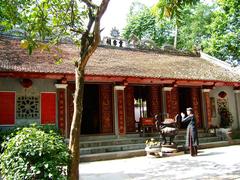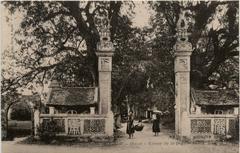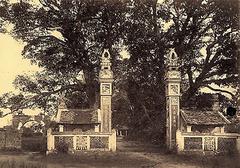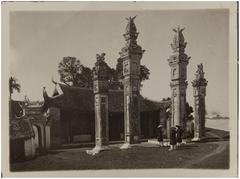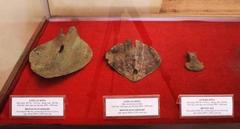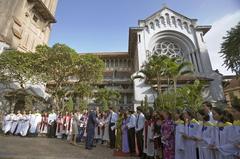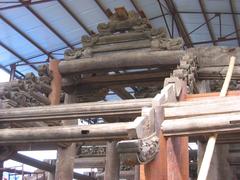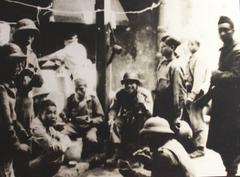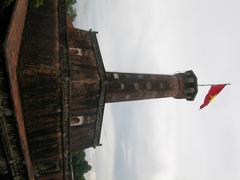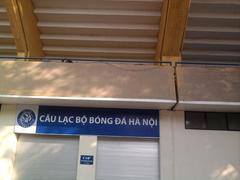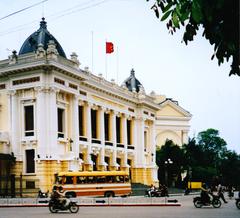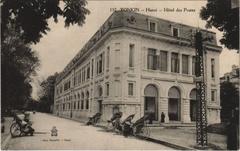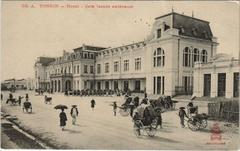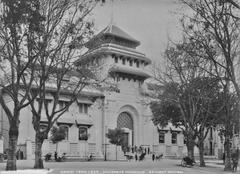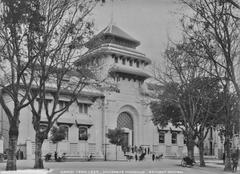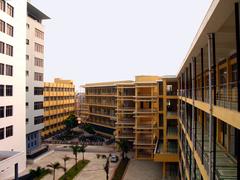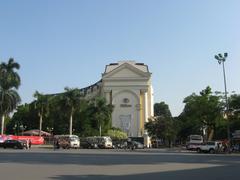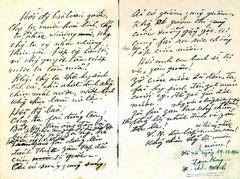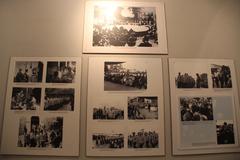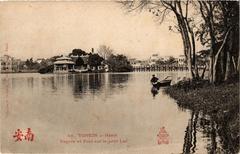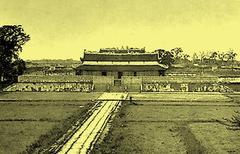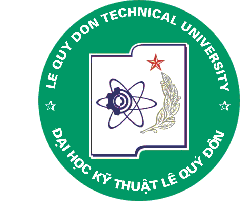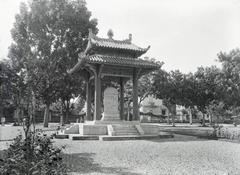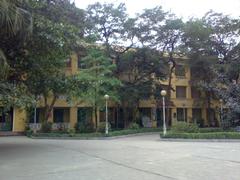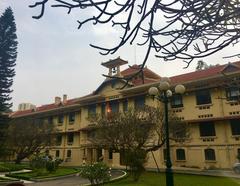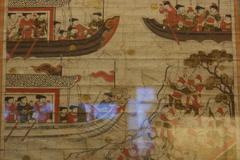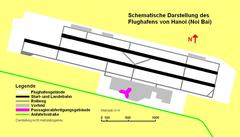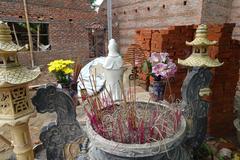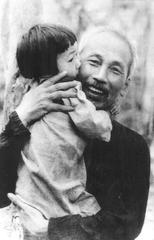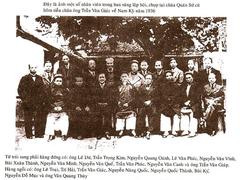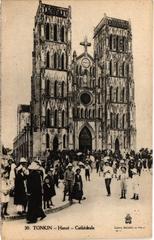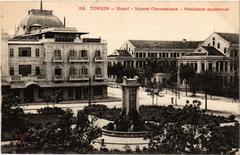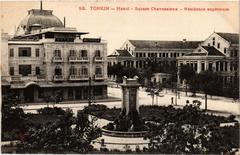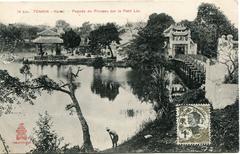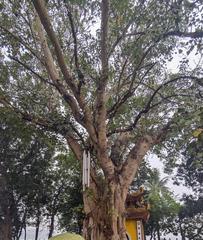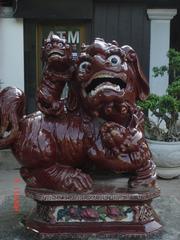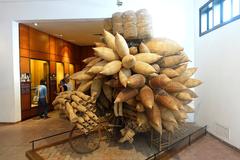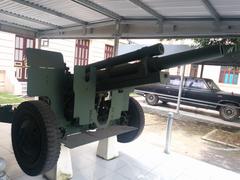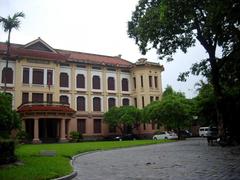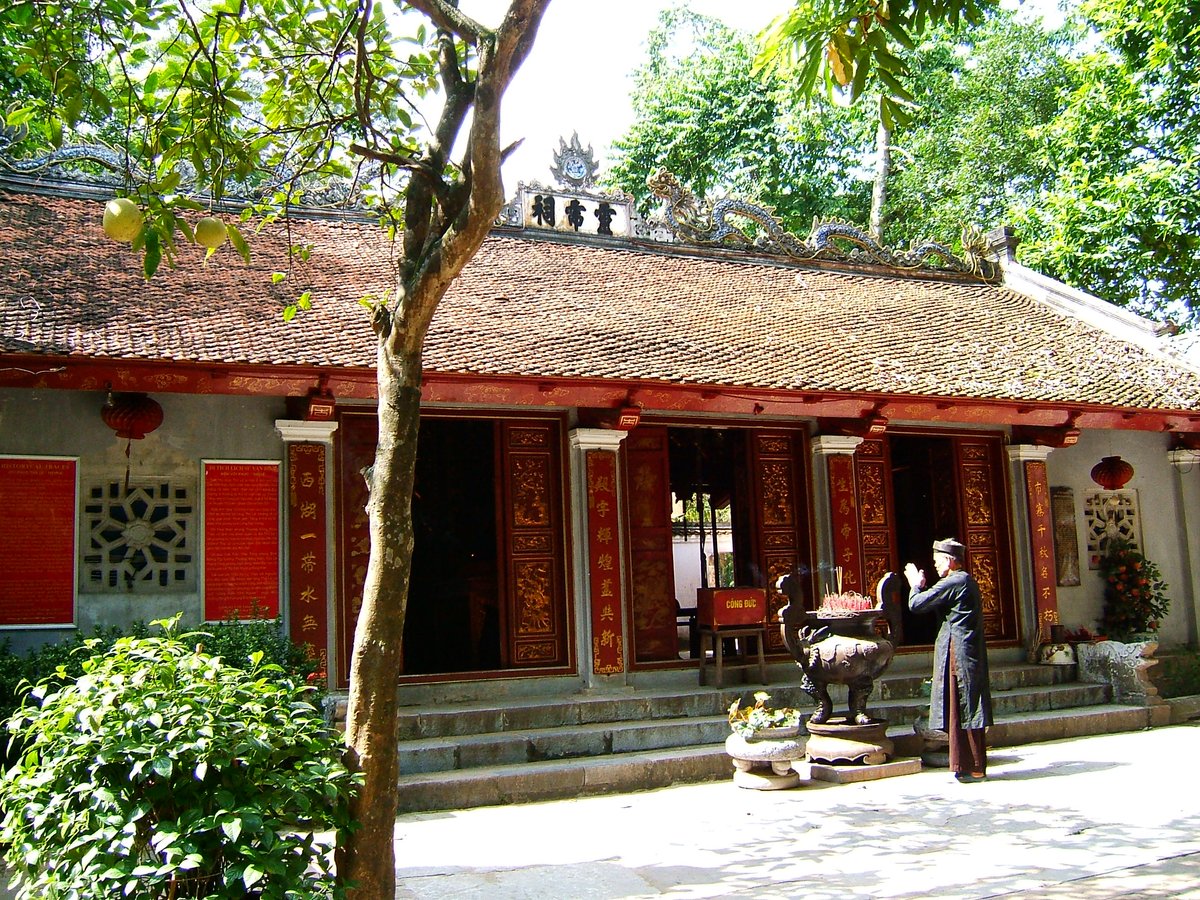
Voi Phục Temple Hanoi: Visiting Hours, Tickets, and Historical Sites Guide
Date: 14/06/2025
Introduction
Nestled in the lush heart of Hanoi, Voi Phục Temple—known as the “Kneeling Elephant Temple”—stands as a remarkable testament to Vietnam’s millennia-old heritage. Founded in 1065 during the reign of King Lý Thánh Tông, Voi Phục Temple honors Prince Linh Lang, a legendary national hero revered for his valor and divine lineage. The temple’s symbolic kneeling elephant statues at the entrance epitomize loyalty, spiritual strength, and the enduring resilience of the Vietnamese people (BDATrip; Vietnam News).
As the western guardian among the Four Sacred Temples (Thăng Long Tứ Trấn) of ancient Hanoi, Voi Phục Temple anchors the city’s spiritual protection system, blending animism, Taoism, and Buddhism. Set beside Thu Le Lake, its architectural elegance—from ornate wooden altars to mythic rooftop carvings—offers visitors a sanctuary of serenity and deep cultural resonance (Saigoneer; vinwonders.com).
This guide covers essential visitor information, from current opening hours and free ticketing to accessibility and nearby attractions. It also explores the temple’s historical evolution, cultural events such as the Linh Lang Festival, and practical tips for a rewarding visit. Whether you’re a history enthusiast, spiritual seeker, or cultural explorer, Voi Phục Temple promises an immersive journey into Hanoi’s living traditions and layered past (Vietnam Online; Vietnam Discovery).
Table of Contents
- Origins and Founding of Voi Phục Temple
- Role within the Thăng Long Tứ Trấn (Four Sacred Temples)
- Architectural Evolution and Restoration
- Visiting Information: Hours, Tickets, and Access
- Travel Tips and Nearby Attractions
- Historical and Cultural Significance
- Recognition and Preservation
- Visitor Experience: Atmosphere, Etiquette, and Photography
- Frequently Asked Questions (FAQ)
- Summary and Further Resources
- References
Origins and Founding of Voi Phục Temple
Voi Phục Temple, or “Kneeling Elephant Temple,” was established in 1065 under King Lý Thánh Tông to honor Prince Linh Lang—a legendary figure believed to be his son with a divine dragon. Linh Lang’s military leadership during the Song Dynasty invasions solidified his status as a national hero. After his death at the Cầu River battlefield, the people of Đại Việt built the temple to venerate his spirit as a city guardian (BDATrip; Vietnam News).
The temple’s distinctive name stems from the two kneeling elephant statues at its entrance, symbolizing Linh Lang’s loyal companions and the enduring strength of the Vietnamese people (Saigoneer).
Role within the Thăng Long Tứ Trấn (Four Sacred Temples)
Voi Phục Temple is one of the Four Sacred Temples (Thăng Long Tứ Trấn) established to spiritually safeguard the ancient capital of Thăng Long (now Hanoi). Each temple protects a cardinal direction:
- East: Bạch Mã Temple (Long Đỗ, patron of abundance)
- West: Voi Phục Temple (Linh Lang Đại Vương)
- South: Kim Liên Temple (Cao Sơn Đại Vương, mountain god)
- North: Quán Thánh Temple (Huyền Thiên Trấn Vũ, Taoist deity)
Strategically placed, these temples fuse spiritual and physical guardianship over the city, reflecting the Lý Dynasty’s vision of a cosmically protected capital (Vietnam News; Saigoneer).
Architectural Evolution and Restoration
Site Layout and Entrance
Located in Thu Le Park, Voi Phục Temple sits atop a gentle mound, with its main hall facing east toward Thu Le Lake. The approach features a broad, tree-lined path and a Tam Quan (three-entrance) gate, flanked by the iconic kneeling elephants—an artistic and symbolic highlight (vinwonders.com; goexplorevietnam.com).
Temple Complex
The layout follows the traditional “Công” (工) character, comprising:
- Front Hall (Tiền Đường): Displays ceremonial weapons, a large drum, and a bronze bell.
- Middle Hall (Trung Đường): Main altar dedicated to Linh Lang, with statues and offerings.
- Rear Hall (Hậu Cung): Shrines for Linh Lang’s mother and the Three Holy Mothers (guidetohanoi.com).
Architectural features include upturned eaves, dragons, phoenixes, qilins, and tigers on the roof, terracotta tiles, and intricately carved ironwood pillars. The courtyard leads to a semicircular well symbolizing purity, and a bridge connects the temple to Thu Le Zoo (vinwonders.com; 2-vietnam.com).
Materials and Restoration
Traditional materials—ironwood, brick, stone, and glazed tiles—are used throughout. The temple has survived conflicts and colonial damage; major restorations in 2000 and 2009 reinforced its structures and preserved original details (2-vietnam.com).
Visiting Information: Hours, Tickets, and Access
- Visiting Hours: Daily from 8:00 AM to 5:00 PM (extended during festivals).
- Tickets: Entrance is free; donations are appreciated for temple maintenance.
- Location: Thu Le Park, Ba Đình District, 5–6 km west of Hoan Kiem Lake.
- Getting There: Accessible by taxi, ride-hailing apps, motorbike, or public buses (routes 16, 27, 32, 34, 49).
- Accessibility: Paved, mostly flat pathways; ramps at main entrances. Some halls have steps and limited wheelchair access.
- Guided Tours: Available via local operators or temple caretakers; English-speaking guides recommended for deeper insights.
Travel Tips and Nearby Attractions
- Best Time to Visit: Early morning or late afternoon for cooler weather and fewer crowds. June is warm and humid; bring water and rain gear (Gonetovietnam).
- Dress Code: Modest attire required (shoulders and knees covered); hats and shoes removed inside main sanctuary.
- Nearby Attractions: Thu Le Zoo (within park), Thủ Lệ Lake, Vietnam Museum of Ethnology, Ho Chi Minh Mausoleum, One Pillar Pagoda.
- Facilities: Restrooms near entrance; food vendors in the park; basic amenities.
- Travel Tools: The Audiala app offers digital guides, maps, and audio tours.
Historical and Cultural Significance
Voi Phục Temple upholds centuries-old traditions and spiritual practices. It is not only a place of worship but also a hub for community festivals and cultural events. The annual Linh Lang Festival (11th–13th day of the second lunar month) features colorful processions, rituals, martial arts, and folk performances, attracting both locals and visitors (Vietnam Discovery).
The temple’s artistic heritage includes kneeling elephant statues, lacquered calligraphy panels, ceremonial weapons, and wooden or bronze statues that reflect a synthesis of Confucian, Buddhist, and indigenous beliefs (guidetohanoi.com).
Recognition and Preservation
Voi Phục Temple is a nationally recognized relic, officially protected since 1962. In 2024, it was designated a special tourist site by the Hanoi People’s Committee, underlining its importance in the city’s heritage conservation efforts (Vietnam News).
Ongoing preservation is overseen by the Ba Đình District People’s Committee, ensuring restoration and tourism development comply with Vietnam’s heritage laws.
Visitor Experience: Atmosphere, Etiquette, and Photography
Atmosphere
The temple’s shaded courtyards, incense-fragrant air, and tranquil setting create a peaceful, contemplative atmosphere. It is less crowded than other popular Hanoi sites, offering a more intimate and meditative experience.
Etiquette and Local Customs
- Maintain quiet, especially during prayers or rituals.
- Modest dress and respectful behavior are expected; photography inside main sanctuaries may be restricted—ask permission.
- Offerings (incense, flowers, fruit, coins) are welcome; follow local practices.
Photography
The kneeling elephants, roof decorations, and serene courtyards are favorite photographic subjects. Early morning and late afternoon light is best. Flash photography is discouraged inside halls.
Frequently Asked Questions (FAQ)
Q: What are the Voi Phục Temple visiting hours?
A: Open daily from 8:00 AM to 5:00 PM, with extended hours during festivals.
Q: Is there an entrance fee?
A: Entry is free; donations are welcome.
Q: Are guided tours available?
A: Yes, through local operators or by arrangement at the temple.
Q: What is the dress code?
A: Modest attire covering shoulders and knees. Remove hats and shoes before entering the main sanctuary.
Q: Is the temple wheelchair accessible?
A: The grounds are mostly flat, but some halls have limited access due to steps.
Q: Can I take photographs inside the temple?
A: Photography is allowed in most areas; avoid flash inside halls and be respectful during ceremonies.
Summary and Further Resources
Voi Phục Temple is a vital cultural monument that embodies Hanoi’s historical resilience, spiritual depth, and architectural artistry. Its nearly thousand-year-old legacy as a guardian temple, vibrant community hub, and architectural gem makes it an indispensable stop for any visitor to Hanoi. Free entry and welcoming hours make it accessible to all, while ongoing preservation efforts ensure its stories endure (BDATrip; Saigoneer; Vietnam Discovery).
Enhance your visit by using audio guides, joining a festival, or combining your trip with nearby cultural sites. For more information on visiting Hanoi in June, see Gonetovietnam.
References
- Voi Phục Temple in Hanoi: Visiting Hours, Tickets, History, and Travel Tips, 2025, BDATrip (BDATrip)
- Voi Phục Temple in Hanoi recognized as tourist site, 2024, Vietnam News (Vietnam News)
- The Legends of Thăng Long Tứ Trấn, the 4 Guardian Temples Protecting Hanoi, 2023, Saigoneer (Saigoneer)
- Voi Phục Temple Hanoi Architectural Highlights, 2025, Vinwonders (vinwonders.com)
- Discover Voi Phục Temple Hanoi: Your Guide to Visiting Hours, Tickets, and Cultural Heritage, 2025, Vietnam Online (Vietnam Online)
- Voi Phục Temple Hanoi Travel Guide, 2025, Vietnam Discovery (Vietnam Discovery)
- Visiting Vietnam in June (Gonetovietnam)
- Voi Phục Temple: History, Architecture and Must-Try Experiences (2-vietnam.com)
- Voi Phục Temple on Go Explore Vietnam (goexplorevietnam.com)
- Voi Phục Temple on Guide to Hanoi (guidetohanoi.com)
For more insights, internal links to related Hanoi historical sites, and up-to-date visitor information, download the Audiala app and follow our latest guides.
